Kazimir Malevich: A mystery painting, either masterpiece or fake, puzzles experts
- Published
Art expert Marina Zagidulina: "It was obviously from the school of Malevich."
The painting has modest dimensions, but it could be a sensational find: is Man with a Shovel a genuine Malevich?
Belarus is where Kazimir Malevich, an ethnic Pole, lived, painted and developed an avant-garde movement that took the art world by storm in the 1920s. So Belarusians dearly hope their country will finally have its own Malevich confirmed.
For 25 years it has been on display in the city of Hrodna, near the Polish border, with the label: Malevich?
Internationally he is probably most famous for Black Square - a work that epitomises his love of abstract forms, in a radical break from figurative art rooted in recognisable reality. Malevich finally created four versions of Black Square.
Malevich is one of the most popular modern artists internationally, his works are cherished by galleries and they fetch eye-watering sums at auctions.

Black Square: now a world-famous symbol of avant-garde art
Man with a Shovel came to light among antique items found by border guards at the Belarus-Poland border.
'Here's some rubbish'
Marina Zagidulina, a well-established art expert in Belarus, recalls how she spotted it back in 1994. After the collapse of the Soviet Union she was among about a dozen experts required to identify antiques seized at the border.
"Lots of items were found on the train travelling from Russia to Germany: miniatures by Aivazovsky, Bogolyubov, icons, binoculars, a pipe, watches - all from the 19th and early 20th centuries," she told BBC Russian.
"Then they casually threw this plywood piece on top and said: 'Here's some rubbish. We wanted to throw it away, but then we thought: since it was hidden, it probably has some value'.
"I gasped immediately, as it was obviously from the school of Malevich."

Founder of Suprematism: Kazimir Malevich (1879-1935)
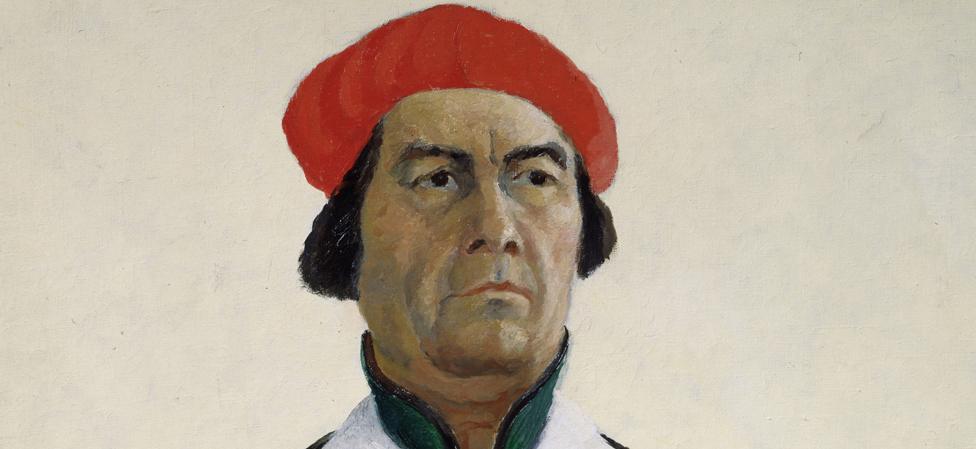
A Malevich self-portrait, 1933
Born near Kiev, Ukraine in 1879 - then part of the Russian Empire
Experiments with various Modernist styles - influenced by Impressionism, Cubism and other new art movements
Studies art at a Moscow institute in 1904-1910
In 1915 publishes his manifesto From Cubism to Suprematism, abandoning representational art, in favour of an abstract realm of geometrical shapes
Teaches at Soviet art schools after 1917 Bolshevik Revolution
Works exhibited abroad to much acclaim in late 1920s
Soviet officialdom turns against abstract art under dictator Joseph Stalin in 1930s - Malevich jailed for two months in 1930, and returns to figurative art
Dies of cancer in Leningrad in 1935, aged 57

A woman was later prosecuted over the smuggling, but she went to the West after being released with a pardon.
Man with a Shovel measures 36.5cm (14.4ins) by 26.5cm (10.4ins).
Some features of the work are puzzling. Ms Zagidulina says she is sure that it was touched up with some fresh oil paint after being found at the border.
However, Yuri Kiturko, director of the Hrodna State Historical and Archaeological Museum, says it was not restored - "they just cleaned the dust off it".
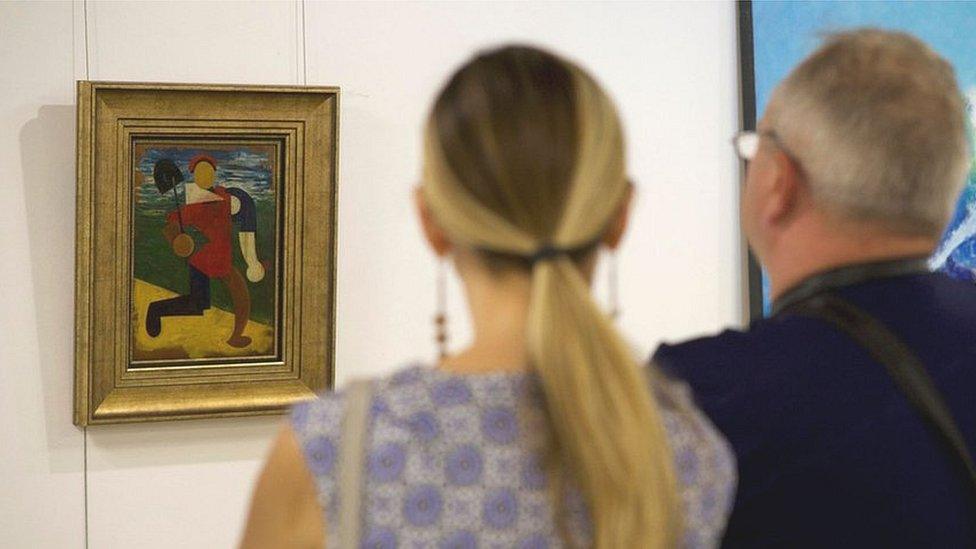
Man with a Shovel went on show in a gallery in the Belarus capital Minsk in June
Ms Zagidulina says that in the middle of the painting "the thickness of paint varies - you can see that with the naked eye - and this needs investigating".
Considering how hungry the art world is for Malevich works, why haven't they authenticated this painting yet?
For the past 25 years the money simply has not been available in Belarus to do the kind of expensive authentication that the art world demands.
In addition, if proven to be genuine, the painting would require more expensive security.
You might also like:
A St Petersburg art collector, Andrei Vasilyev, believes Man with a Shovel to be a fake.
"It's a modern piece done in the style of Malevich, but made to look old, which was being taken to the West for sale at some minor auction," he told the BBC.
He says close inspection of the plywood base should reveal the age of the work.
The fact that it came to light in the 1990s is suspicious, he argues. At that time many forgeries were sent to the West as the Soviet Union disintegrated chaotically.
But according to another art expert, Olesya Inozemtseva, the use of colour and application of paint "point to this being either a work executed by Malevich himself, or a work that he co-created, perhaps with one of his students".
She says the influence of his Belarusian roots and surroundings on his creativity remains insufficiently researched.
- Published16 July 2014
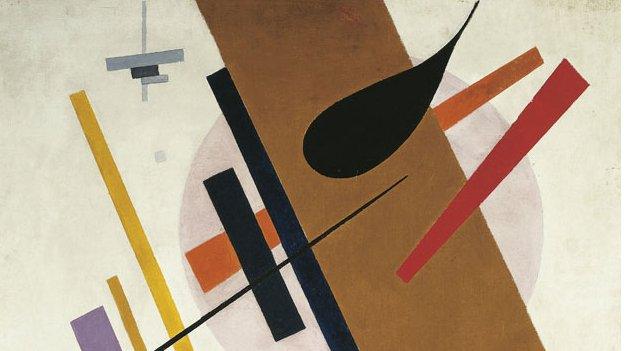
- Published27 October 2019
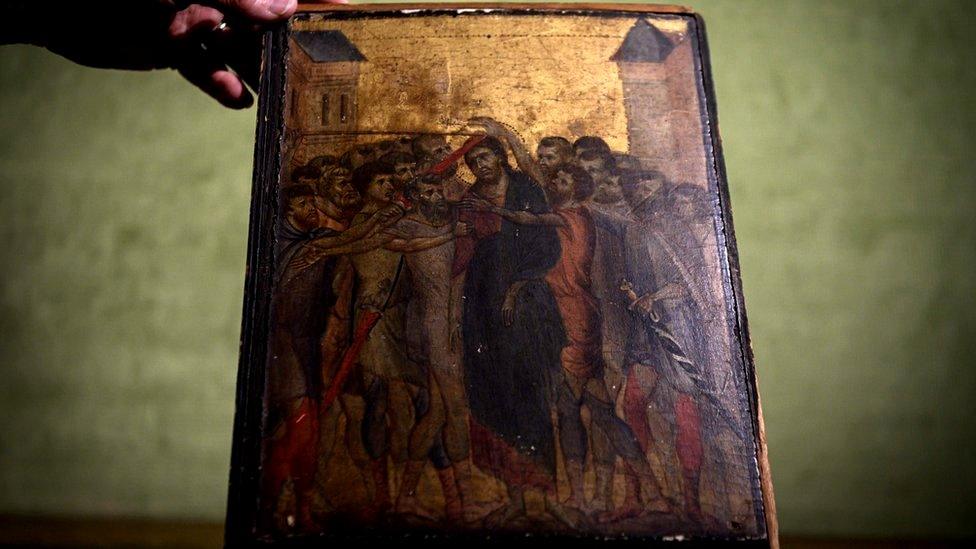
- Published27 July 2018
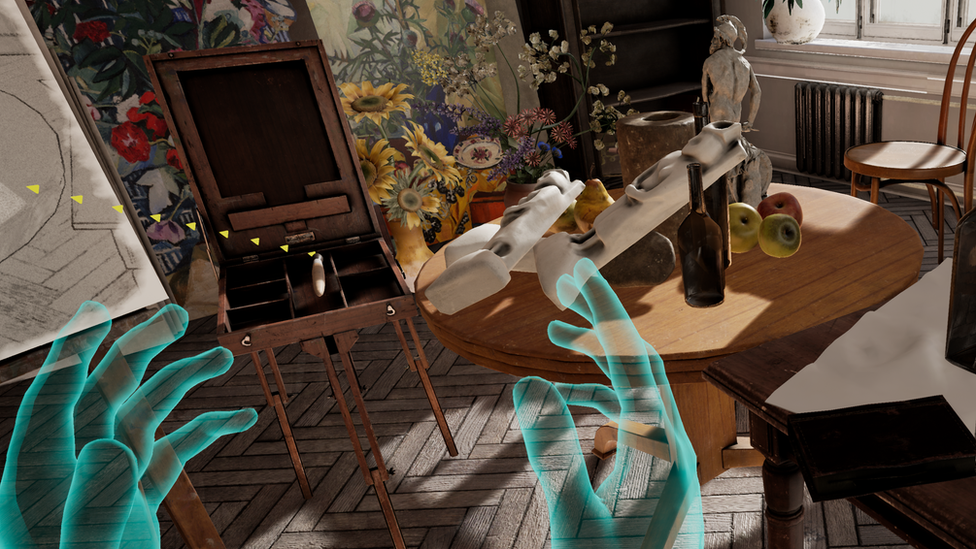
- Published19 November 2018
